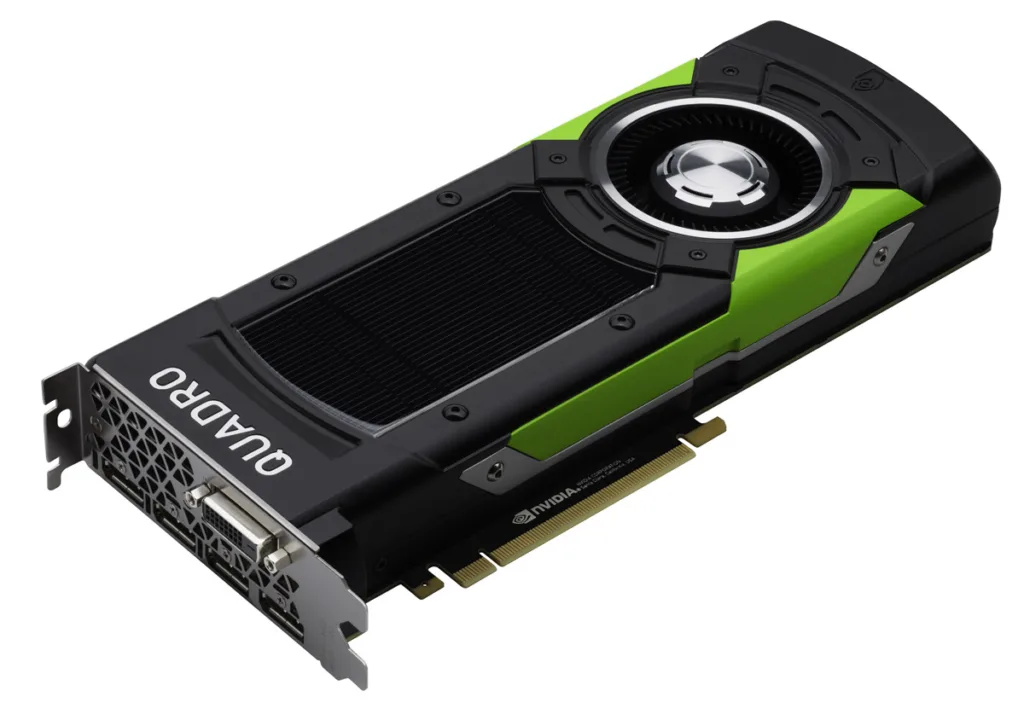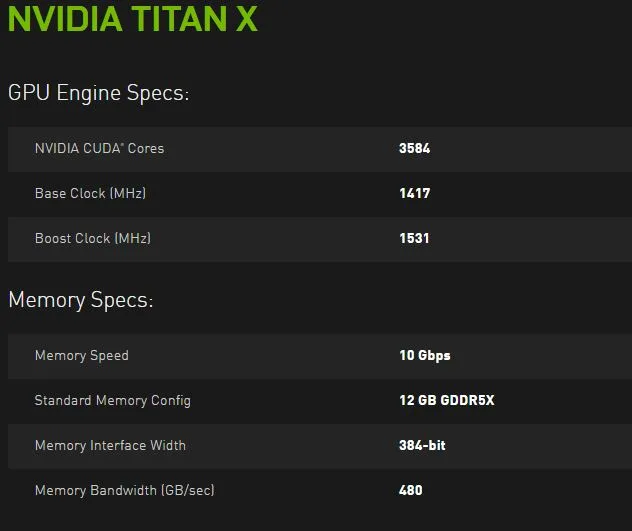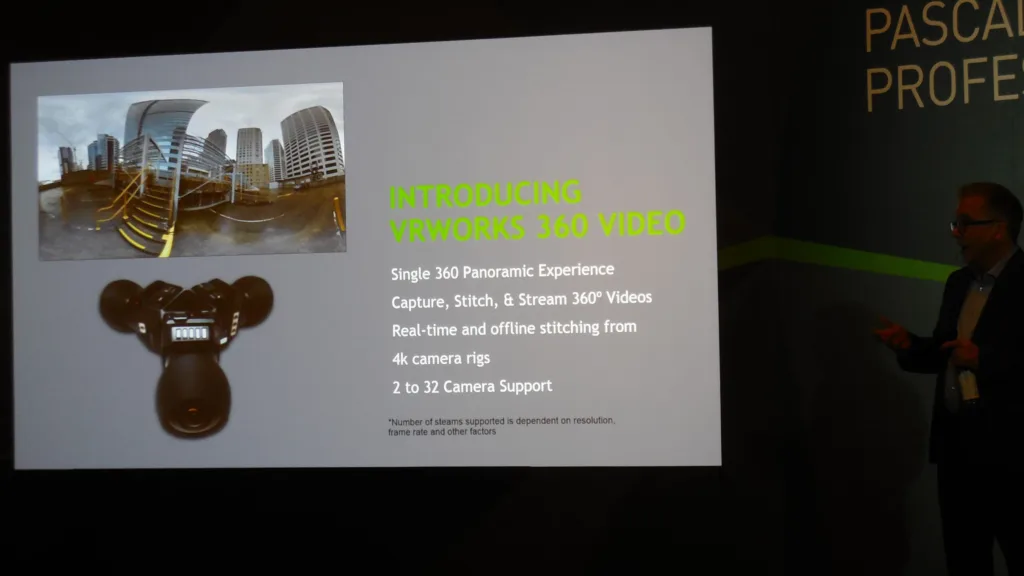BTR visited SIGGRAPH for the first time yesterday, and we were invited to attend Nvidia’s press conference. The highlight of the press conference was the release of the Pascal Quadro P6000 which will probably be close to 4 times more expensive than the new $1200 Pascal GeForce Titan X. We found out what makes the new Quadro so much more expensive than the GeForce card although they are similarly powerful.
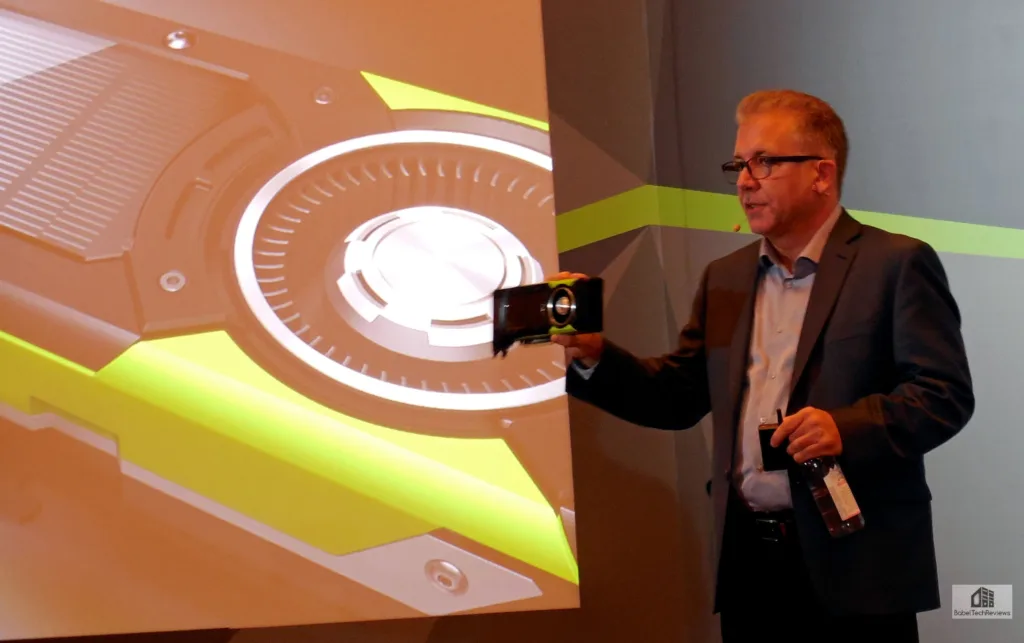
There is no price yet announced for the Pascal P6000, but if the current Quadro is any indication, the Maxwell 12GB version of the M6000 costs over $4,000 on Newegg and there is an even more expensive 24GB version available.
The specifications of the Titan X and the Quadro P6000 are similar and they are both based on GP102. The Quadro is the full chip, 3840 CUDA cores – all 30 of 30 SMs are enabled whereas the Titan X has only 28 of 30 SMs enabled for a total of 3584 CUDA cores. The Titan X comes equipped with 12GB of GDDR5X whereas both the Quadro P6000 and the GP100 Tesla card have 24GB. But these differences alone cannot account for the rather extreme pricing differences.
The Tesla P100 comes equipped with 24GB of HBM2 memory and its massive bandwidth is used primarily for scientific calculations. It is Dual Precision which means that neither the Titan X nor the Quadro will be able to quickly run the specialized scientific programs that it excels in. It has 56 of 60 SMs enabled with 64 cores per SM while the Titan X and the Quadro have 128 cores per SM. And Tesla does not come with any connectors for playing video games, so it is very specialized indeed. It features NVLink which means it can interconnect with other P100s for maximum scalability. It was announced at Nvidia’s GTC in April, and we covered its specifications then when we attended Jensen’s keynote and also the deep dive into Pascal architecture detailed here.
Nvidia debuted the new Quadro P6000 card at SIGGAPH on Monday, describing the GPU based on the Pascal architecture as its fastest to date. It was unveiled at the press conference that we attended by Bob Pette, the company’s VP and GM for professional visualization, at the Hilton at the Anaheim Convention Center. “It is about the realism that professionals demand, and that’s a very different thing from the realism that gamers will accept.”
This faster Pascal GPU will be able to process much more quickly than the current Maxwell-based Quadros, and it can deal with much larger data sets making it very useful for content creation, especially for AR and VR. And we are talking about huge data sets – 50GB – that simply cannot be easily dealt with on a less powerful card without taking a lot of time.
Here is a close-up of the new Pascal Quadro P6000:
Let’s look at its specifications to see if we can note the differences between the Pascal P6000 and the Pascal Titan X.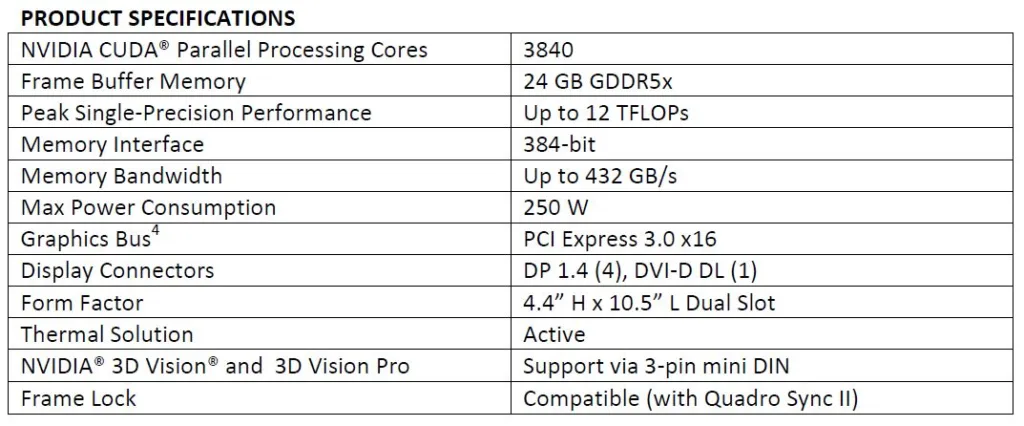
Here are the Pascal Titan X specifications:
We see a probably faster Titan X core and memory speed with higher bandwidth than the Quadro P6000 but with lower Peak Single Precision performance – 11 TFLOPs FP32 (32-bit floating point) versus 12 TFLOPs on the Quadro. Titan X also has a new instruction set for deep learning inference, 44 TOPS INT8. Quadro specializes in CUDA C, CUDA C++, DirectCompute 5.0, OpenCL, Java, Python, and Fortran as well as having Error correction codes (ECC) on its 24GB of graphics memory, whereas the Titan X has 12GB of non-EEC memory.
We can see that although Quadro can do what the Titan X can do, including playing games and calculating deep learning programs, the Quadro is a specialized professional card for content creation while the Titan X is a hybrid card best suited for Single Precision computing and for super-fast performance in GeForce gaming. The drivers and the level of support that Nvidia provides for the Quadro is what distinguishes it from the Tesla and the GeForce cards.
The Titan will probably perform better on real time applications and render faster with GPU software, but they will use more energy. With 3D MAX in polygon heavy scenes, Quadro will perform better. With CAD software, hundreds or even thousands of lines will spin faster with Quadro. Maya viewport is significantly slower on a Titan X compared with a Quadro especially if your focus is dynamic simulation. Quadro is superior for the viewport, while a Titan is adept at GPU rendering. And of course, some application absolutely require EEC memory, something that Titan X does not offer at all.
Basically, as a consumer-oriented product, Titan X lacks the driver support and ISV certification that workstation builders demand, and that is what Quadros deliver in spades. These are the Quadro-specific graphics drivers, which are optimized for use with software like Solidworks, Iray, Mental Ray, and AutoCAD. With support for up to 24GB of GDDR5X memory, Pascal-powered Quadro graphics can now hold larger and more complex models, work with huge compute data sets, and render way more layers and effects than previously, driving the most detailed and even photorealistic VR environments that professional content creators require.
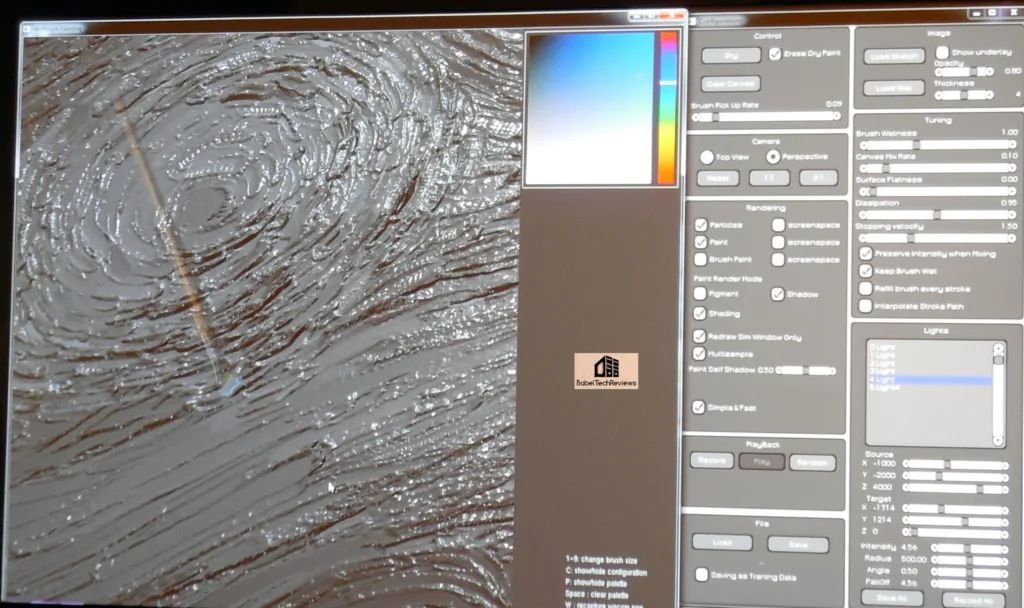
Nvidia positions the P6000 as part of a software and hardware stack for accelerating interactive physically-based rendering applications, which are used by designers to simulate photorealistic environments and objects, far beyond gaming. At the software level, Nvidia has new versions of their Software SDK which provide even greater performance and faster rendering time. Time is of the essence to a professional and if the new Quadro can save them time, then the upgrade to P6000 is worth it to them. The ability to drive five 4K displays simultaneously is also an impressive feature of the Pascal Quadros.
Just as there is a GeForce hierarchy with video cards provided from entry level for gamers right on up to the Titan X, Nvidia has a similar range of choice for professional content creators. Here are some of the Quadro cards that Nvidia has available and what they may be best suited for.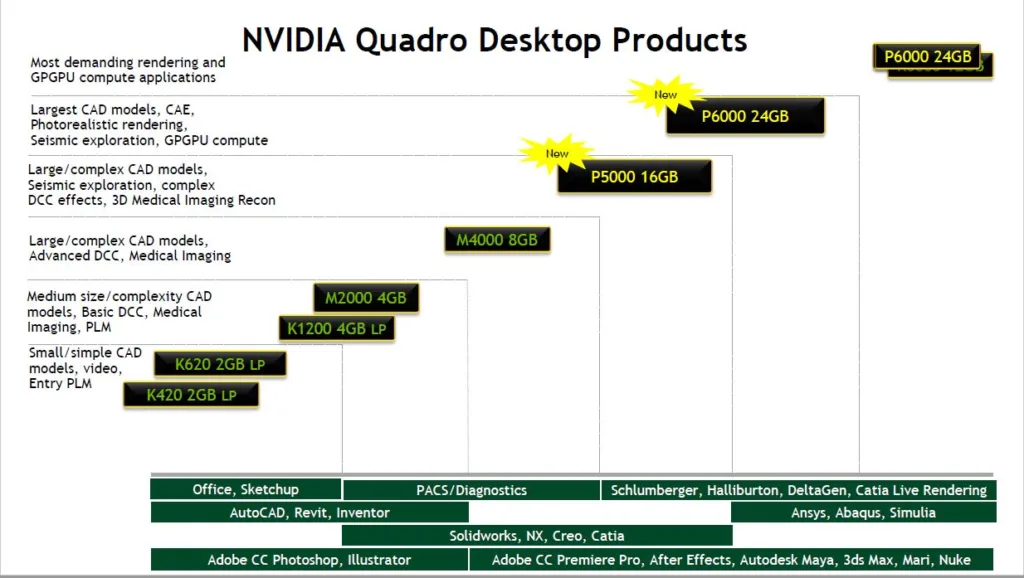
Here is the new software updating Nvidia’s SDK that was revealed at their SIGGRAPH press conference to support and accompany the new P6000.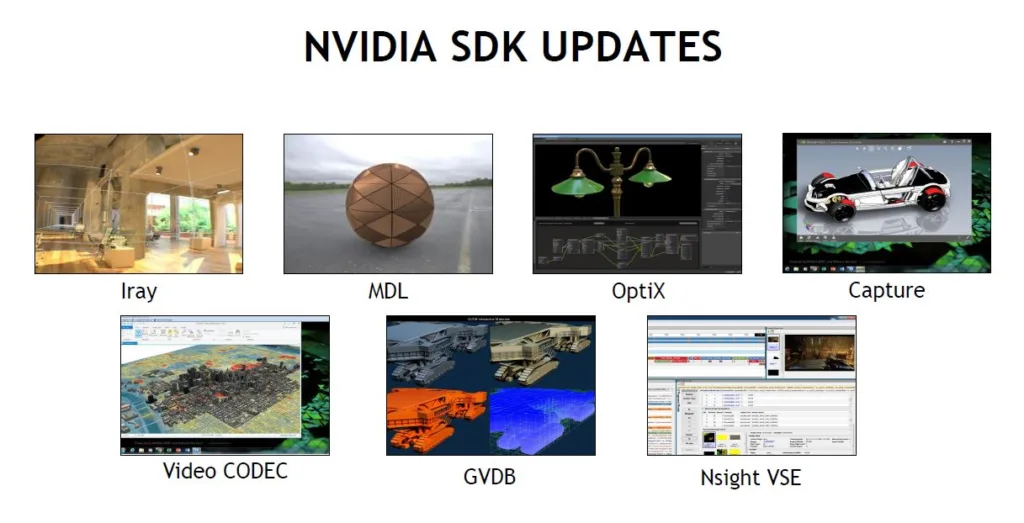
Mental Ray, a very popular film render just got GPU support and it has become 20 times faster than before for Viewport Iteration and workflow. And IRAY which produces completely photorealistic environments due to its ray tracing abilities is VR ready. Further support was just provided by VRWorks new 360 Video which streams live from multiple cameras.
At the press conference we got to see the demo of it in real time and it was not only seamless but nearly latency free.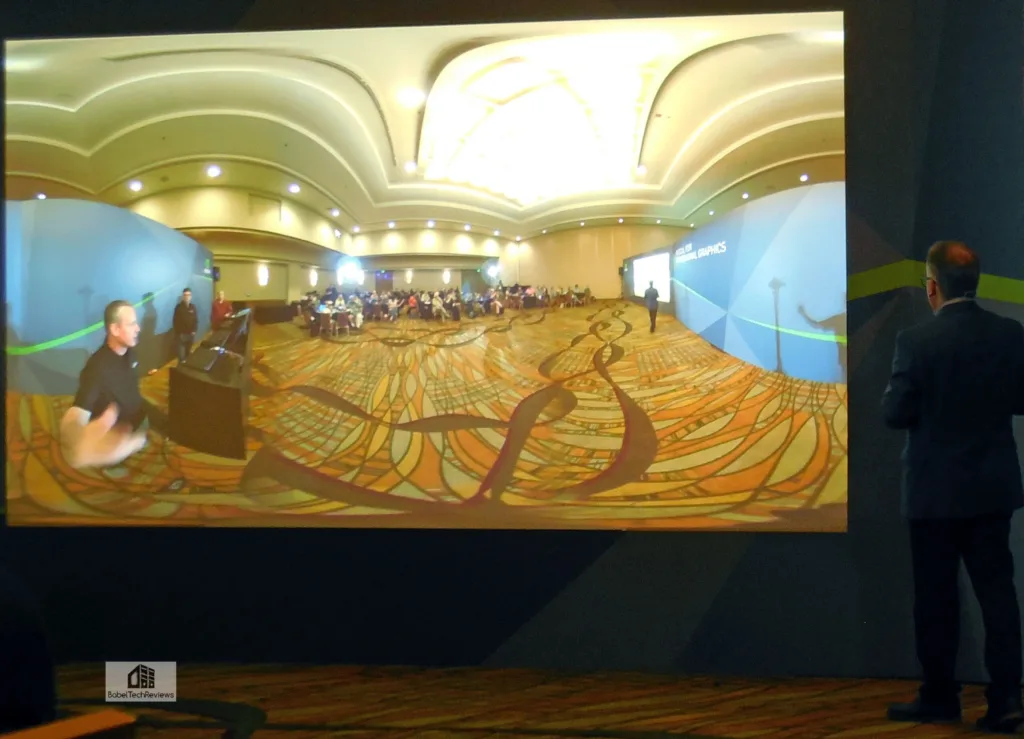
Imagine what 32 cameras could do! But that is the future.
We just touched on a few of the capabilities of Quadro and have contrasted it with GeForce Titan X and with Tesla. Each GPU has its own specialty and pricing and level of support. If you are a gamer, look no further than the Pascal Titan X for the ultimate in gaming; and if you are a programmer who uses SP compute, it may also be the card for you. While Tesla has been developed by Nvidia for scientists, Quadro is primarily aimed at content creators although there is certainly some overlap between these cards’ uses.
We look forward to getting our own Pascal Titan X and comparing its progress over the Maxwell Titan X next week. Stay tuned.
Next up, Tomorrow, we will have a new evaluation pitting three overclocked-to-the-max cards against each other – the GTX 1060 versus the RX 480 and versus the GTX 980 using our 26-game benchmark suite. The results may surprise you.
Happy Gaming (computing, and content creating) !!!
